How To Make Crispy Pickles Without Pickle Crisp Or Lime Solution
Views: 34
You don’t need lab-made chemicals to get crispy pickles. With the right techniques and natural helpers, you’ll have crunchy, wholesome pickles right from your pantry. Sure, shortcuts are fine, but never at the expense of your health.
Here’s the irony, many of us start making pickles at home because they want better, fresher, healthier pickles. But next thing that some of us do, is reach for a jar of Pickle Crisp, a manufactured chemical marketed as the magic fix for crunchy pickles. Others swing the other way, and dunk their cucumbers in liming solution, proudly waving the “tradition” flag.
At first glance, both will give you the much-coveted crunchy cucumbers. However, both come with a baggage. One is a “brand-name chemical” dressed up for the home-canning aisle. The other is a 1950s kitchen holdover that still haunts recipe boxes, even though it can literally make your pickles unsafe to eat.
Basically, two extremes, same result: chemicals in your pickles when the whole point was to avoid them.
Let’s be honest, canners: a crisp pickle is worth the wait, but not worth your health.
What is Pickle Crisp?

Pickle Crisp is a brand name owned by Ball, and it’s simply calcium chloride (E 509) sold in small containers at a premium price. On the surface, it looks like a quick fix. All you need to do, is add a bit of it to your jar, and your pickles will stay crunchy.
But here’s the problem, calcium chloride isn’t harmless.
While FDA says it is “generally recognized as safe” if consumed in small amounts, studies link excessive consumption of calcium chloride to stomach irritation, electrolyte imbalance, and even long-term health issues. Calcium chloride has a very salty taste and can cause mouth and throat irritation at high concentrations. It also has the potential to release heat energy upon dissolution in water. This release of heat can lead to trauma and burns in the mouth, throat, esophagus, and stomach. In fact, there have been reported cases of stomach necrosis resulting from burns caused by accidental ingestion of big amounts of undissolved calcium chloride.
References:
Food-Safe Calcium Chloride vs. Industrial Calcium Chloride: What’s the Difference?
You’ve probably heard conversations about Pickle Crisp being safe because it is food-grade calcium chloride, and maybe you’ve wondered: “Wait… isn’t calcium chloride calcium chloride? We’ve got just the answer: Industrial or Technical Calcium Chloride.
Industrial calcium chloride is used for things like:
- De-icing roads
- Dust control on gravel
- Concrete setting
- Desiccants
It may contain:
- Heavy metals
- Other chemical impurities
- Residues from industrial processing
In short, it’s toxic if you eat it.
Food-Grade Calcium Chloride
Food-grade calcium chloride is the type sold in the canning aisle or used in commercial food production. It’s:
- Highly purified and tested for contaminants
- Manufactured specifically for human consumption
It’s the same chemical as industrial calcium chloride, but regulated to meet food safety standards. That means the food-grade calcium chloride does not contain heavy metals, impurities, or additives that could harm you if ingested in small amounts. Nevertheless, do you really want to put something in your body that, if ingested in large quantities, can give you stomach irritation, electrolyte imbalance, and even long-term health issues? The answer is up to you.
Why Pickle Crisp is not Like Adding Salt
You may hear this argument all the time: “Salt isn’t exactly natural either, so why worry about Pickle Crisp?” True, table salt is technically a mineral we mine from the earth or evaporate from seawater, but here’s the key difference:
Salt is a natural preservative and a flavor enhancer. Sodium chloride occurs naturally in seawater and mineral deposits. It’s essential to human biology – we need it to survive.
It works to draw water out of cucumbers, create an inhospitable environment for bacteria, and help flavor your pickles.
Pickle Crisp (calcium chloride) also comes from minerals and underground brines. But, unlike salt, it doesn’t preserve or flavor your food. It only firms the cell walls of the vegetables you are pickling. Additionally, it’s not naturally occurring but rather manufactured and refined in a lab or industrial process.
So, while both are “minerals,” their roles in your pickles are very different. Salt is functional, necessary, and traditional. Pickle Crisp is optional, convenience-based, and not a food your ancestors ate.
What is Liming Solution ?
If Pickle Crisp is the modern shortcut, liming solution is the retro nightmare. If you’ve ever stumbled across an antique canning book from the 1920s or 1930s, you might have noticed the casual suggestion to “soak cucumbers in lime water overnight for extra crispness.” Sounds quaint, doesn’t it? Almost like a spa treatment for cucumbers. Except in this version of spa cucumbers are bathing in calcium hydroxide.
Yes, that’s right. Lime water isn’t lime juice. It’s not even remotely citrus. Liming solution is made from slaked lime, or calcium hydroxide. And let’s just be very clear about it, calcium hydroxide is not the rustic, “all-natural” mineral people like to imagine it is. Sure, you’ll find it described in nostalgic terms, like some friendly powder that just pops up in grandma’s pantry next to flour and sugar. However, in reality calcium hydroxide is produced by treating quicklime (calcium oxide) with water. Quicklime itself is made by heating limestone to blistering temperatures in a kiln. It is the same caustic substance used in plaster, whitewash, and (brace yourself) certain industrial cleaners. Calcium hydroxide can cause chemical burns, eye damage, and respiratory irritation upon contact or inhalation. Does that sound like something that just springs up in a meadow? Not exactly!
Reference: New Jersey Department of Health and Senior Services.
Why It Fell Out of Favor
The biggest issue with lime is that it turns your home kitchen into a bit of a chemistry lab. You’re not just making pickles anymore, you’re conducting an experiment in pH and solubility.
For starters, lime is dangerous if not rinsed thoroughly. It can leave behind a chemical residue that’s irritating to your mouth, throat, and digestive system. When we say “thoroughly” we’re talking multiple long soaks in fresh water, with stirring, draining, and repeating.
Additionally, if any trace of lime is left on your cucumbers, it can throw the acidity of your brine completely off. And, as every safe canner knows, acidity is the golden ticket to botulism-free pickles.
Think about it, you just spent an entire day brining cucumbers in lime, then another several hours soaking them again to get rid of the residue, and you’re still not 100% sure that all the dangerous stuff is gone.
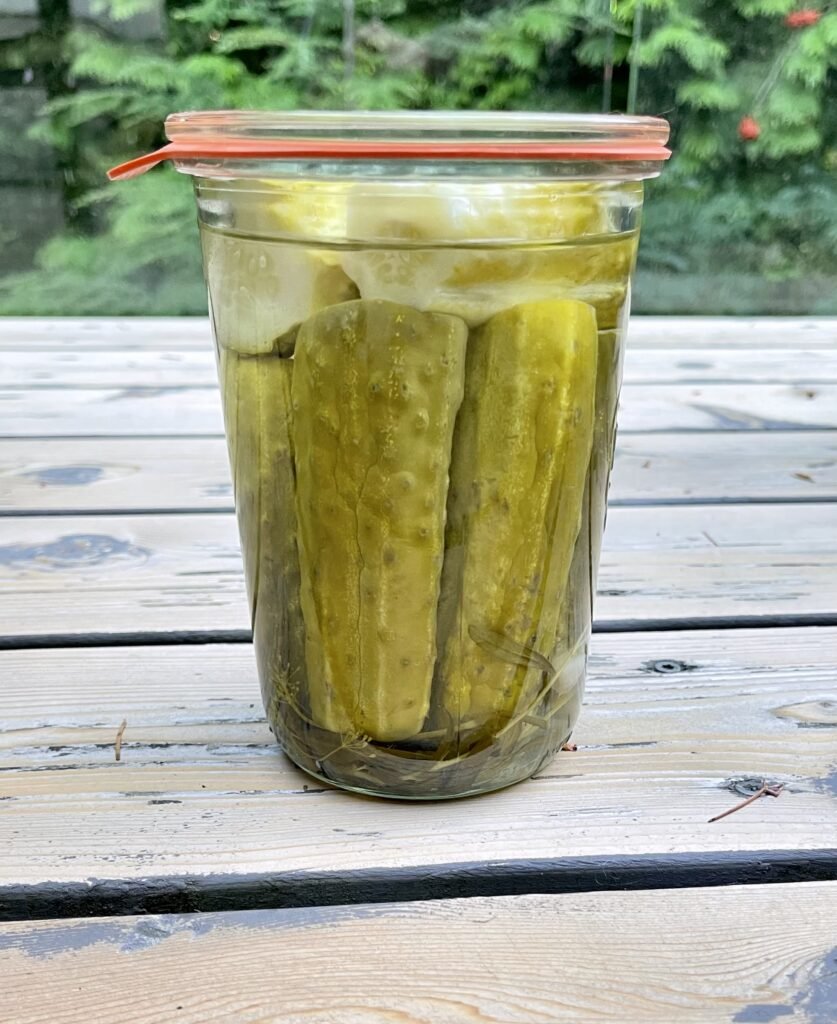
Natural Alternatives for Crispy Pickles
If you’ve made it this far, you’re probably thinking: “So how do you get crispy pickles without chemicals?”
Here are safe, time-tested methods:
Start with fresh cucumbers
The fresher the cucumber, the crunchier the pickle. For best results, use cucumbers within 24 hours of harvest whenever possible.
Use pickling varieties
Not all cucumbers are built for pickling. Slicing cucumbers (the kind you see waxed or covered in a plastic sleeve in your grocery stores) have thicker skins and more water, which turn soft in brine. Pickling cucumbers like Kirby, Boston Pickling, or National Pickling varieties have denser flesh and thinner skins. That means they absorb brine faster and stay crunchy instead of collapsing.
Trim the blossom and tail ends
The tail end and the blossom end of a cucumber contain enzymes that break down pectin. Trimming just 1/16 of an inch off on each side of the cucumber will minimize this enzyme’s effect.
Cold soak
Cucumbers wilt when they lose water. Soaking them in ice water for 4–5 hours before pickling rehydrates the cells, plumps up the skin, and strengthens the cucumber’s structure. This pre-hydration step means that when brine and processing heat come in, the cucumbers hold their shape instead of collapsing.
Grape, oak or blackcurrant leaves
For generations, pickle-makers slipped grape, oak, cherry or blackcurrant leaves into their jars. These leaves are rich in tannins, natural compounds that bind to and strengthen the pectin in cucumber cell walls. In simple terms, tannins act like reinforcements, preventing the cucumbers from softening. It’s an old-fashioned trick, but it works just as well today. Just make sure not to use choke cherry leaves. Those ones are known to contain cyanides.
Correct processing time
Over-processing in a canner leads to mushy pickles. More is definitely not better when it comes to pickles
Salt balance
Proper brine ratios not only preserve flavor but also help firm cucumbers. Never cut corners on salt.
FAQ
So, Is There a Chemical Difference between commercial and food-grade calcium chloride?
Chemically? Not really. CaCl₂ is CaCl₂. But “food-safe” vs. “industrial” isn’t about the molecule itself, it’s about purity, quality control, and regulatory oversight. Food-grade calcium chloride is rigorously tested to make sure it’s free from harmful contaminants.
Why Add Calcium Chloride to Our Food?
The short answer is, it’s there to make certain foods firmer and more appealing
This is how it’s actually used:
- Pickles and cucumbers: Keeps them snappy in jars.
- Tofu and cheese: Helps set curds and improve texture.
- Canned tomatoes: Sometimes added to keep skins from splitting during packing.
Simply put, it’s all about texture. Flavor? Minimal. Safety? None. It doesn’t replace acidity or salt. It just preserves crunch.
So why does it belong in your food? Technically, if consumed in small quantities it’s safe, effective, and approved. Practically, it’s mostly convenience, marketing, and the desire for that “perfect, snap-in-your-mouth” crunch without doing a little extra work in the kitchen.
Here are some great tasting pickling recipes – no chemicals needed:
-
Duo Of Pickled Crunchy Cucumber Spears And Pattypan Squash
Why would anybody pickles pattypan and cucumbers spears together? How about bragging rights? Anyone can bring a jar of cucumber pickles to the table. But when you casually say, “Oh,… read more
-
Soy Sauce Pickled Cherry Tomatoes: Try Bold, New Pickle Flavor
Yes, you can make soy sauce pickled cherry tomatoes! They are a bold twist on traditional pickles, delivering an unexpected burst of umami and sweetness. Forget ordinary vinegar-based brines—this recipe… read more
-
How To Pickle Cherry Tomatoes: Easy Recipe, Tips, And Troubleshooting
Cherry tomatoes are the candy of the vegetable world, but they don’t last forever—unless you pickle them! Try this easy, beginner-friendly recipe for the perfect homemade holiday gift. Pickled and… read more
-
Fried And Pickled Sweet Banana Peppers: Recipe For Canning
Looking for a simple way to jazz up your charcuterie board? This fried and pickled sweet banana peppers recipe is your new go-to! These peppers are easy to can, so… read more
-
How To Make Pickled Roasted Bell Pepper
Pickled roasted bell peppers are a pantry staple, and making them at home is easy and rewarding. With rising prices and growing interest in food quality, now is the perfect… read more
-
Easy Hungarian Lesco: Hearty Tomato – Pepper Stew Canning Recipe
Just as ratatouille brings France to life, lecho (lecso) is Hungary in a bowl. This rich, sweet-and-sour stew of tomatoes and peppers uses simple ingredients with bold, unforgettable flavors. Want… read more
-
A Better Way To Use Green Tomatoes – Pickle Them!
Let’s be honest, fried green tomatoes aren’t that special. Without the movie, we wouldn’t even be talking about them. So, what should you do with your green tomatoes? Make pickles,… read more
-
Spicy Dill Pickles Recipe For Open Kettle Canning Method
Craving heat? We’ve got it! We took our classic dill pickles recipe and turned up the heat to bring you the spicy pickles recipe for canning you’ve been asking for!… read more
-
Pickled Cucumber Salad With Spanish Sweet And Smoky Paprika
Curious about what else you can do with your pickling cucumbers? Try our pickled cucumber salad with carrots and a simple marinade—it’s sure to impress. Plus, it’s the ultimate make-ahead… read more
-
Pickled Cucumbers: Time-Tested Hungarian Recipe
Pickling cucumbers has been a European tradition for ages. But the Hungarian commercially-made Globus pickled cucumbers have always been the top of the line. Globus pickles set the gold standard,… read more
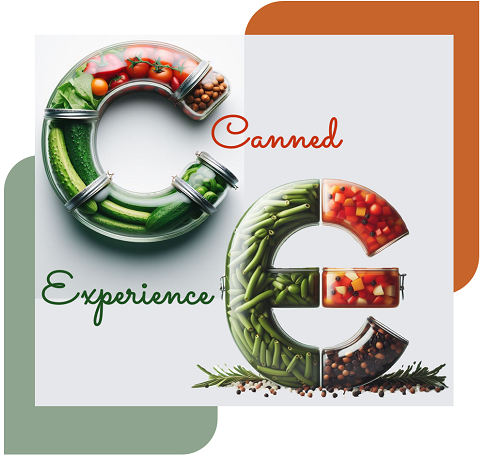
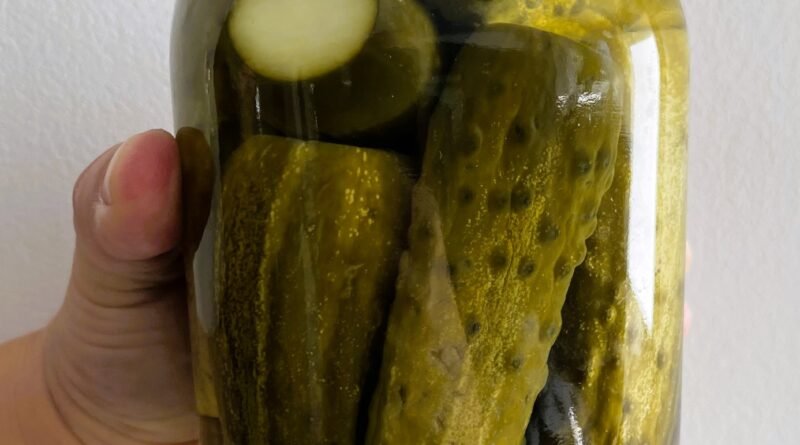
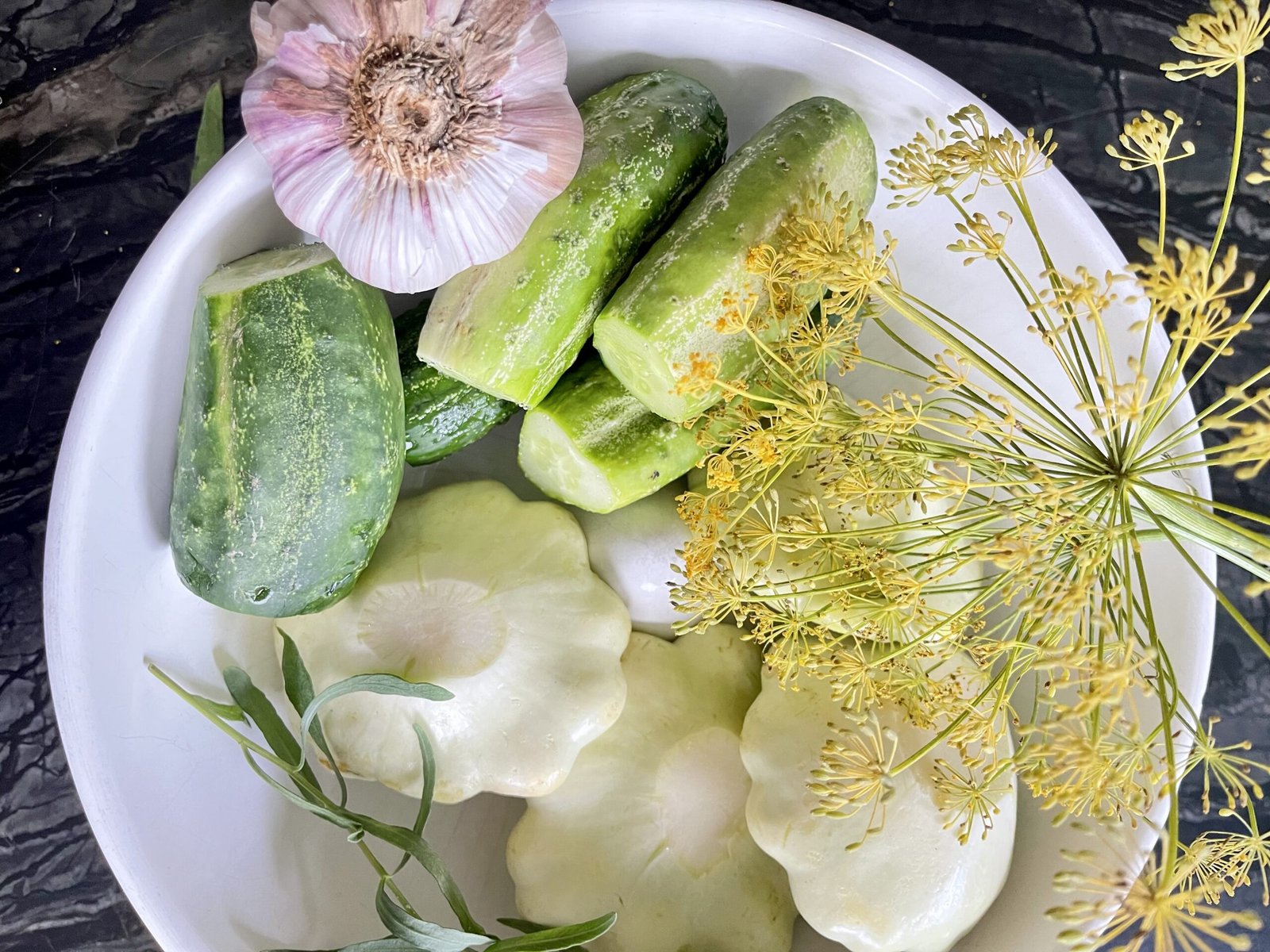
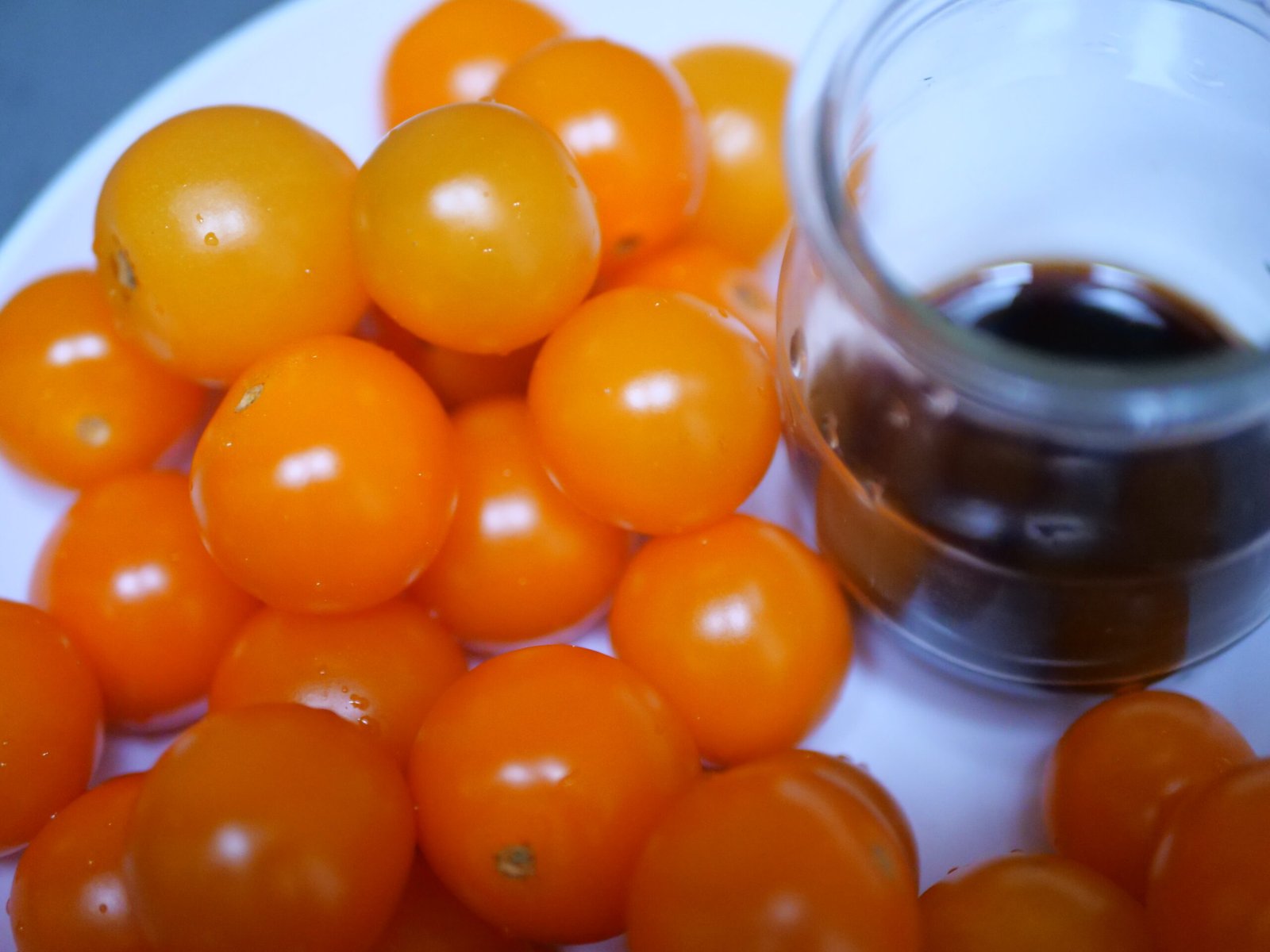
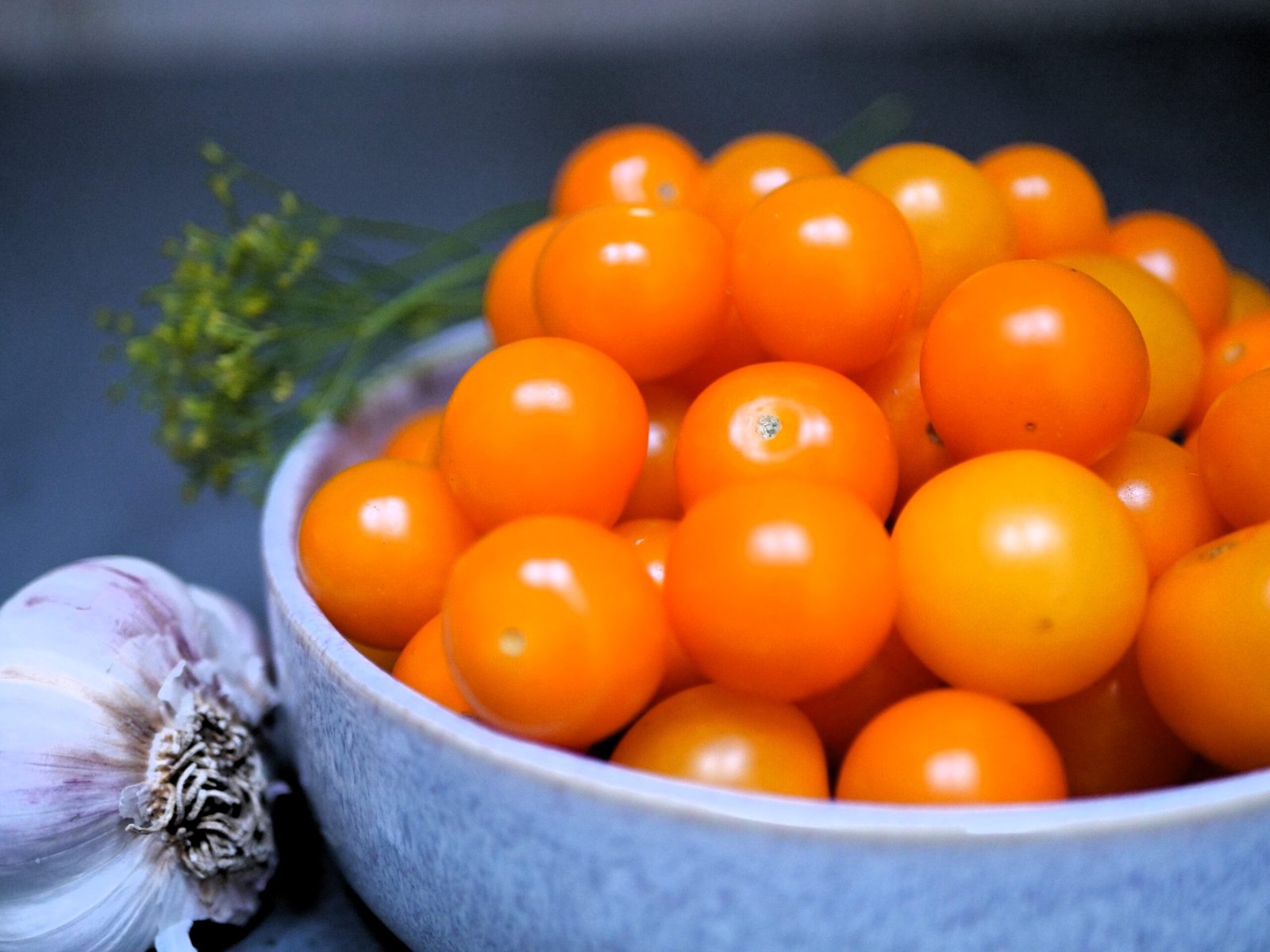


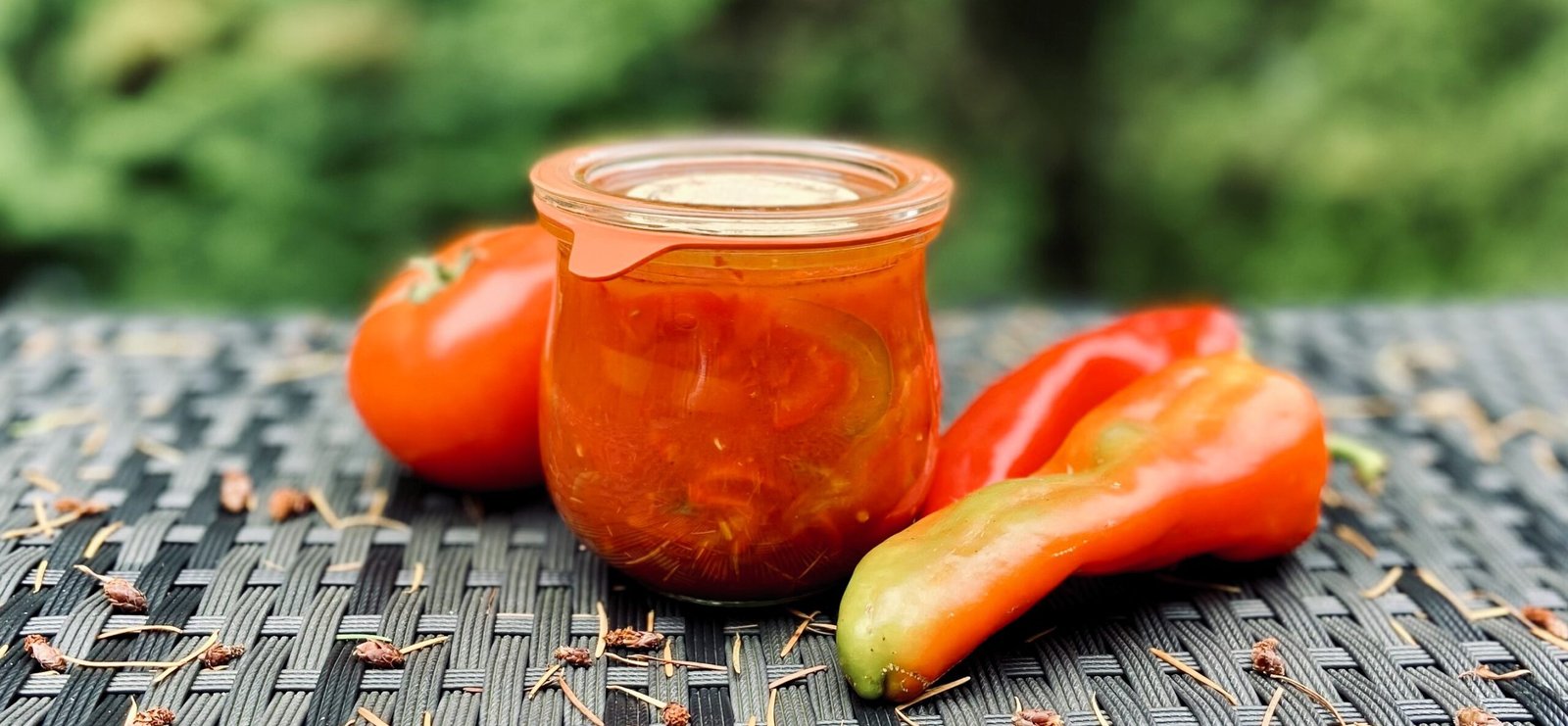

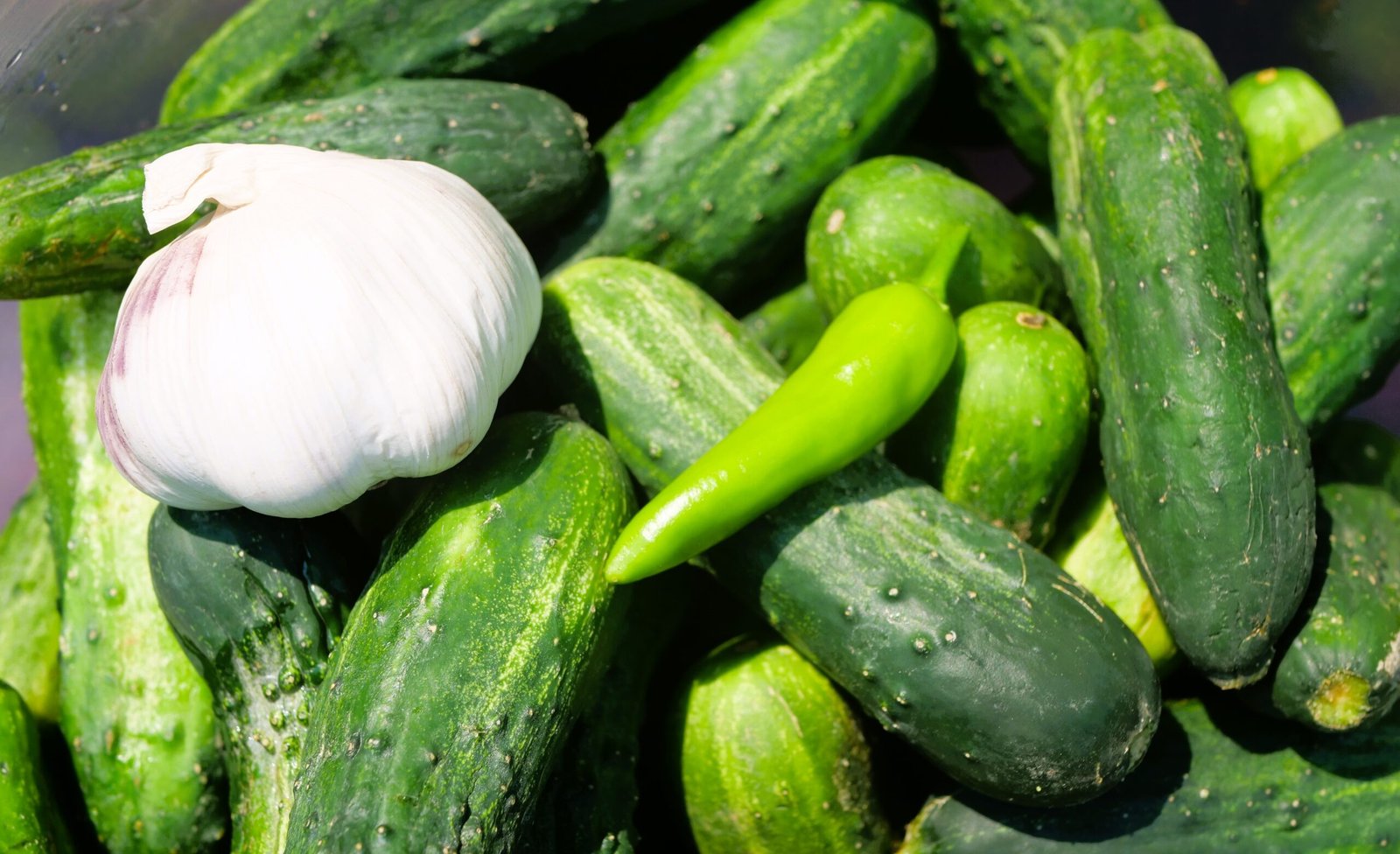
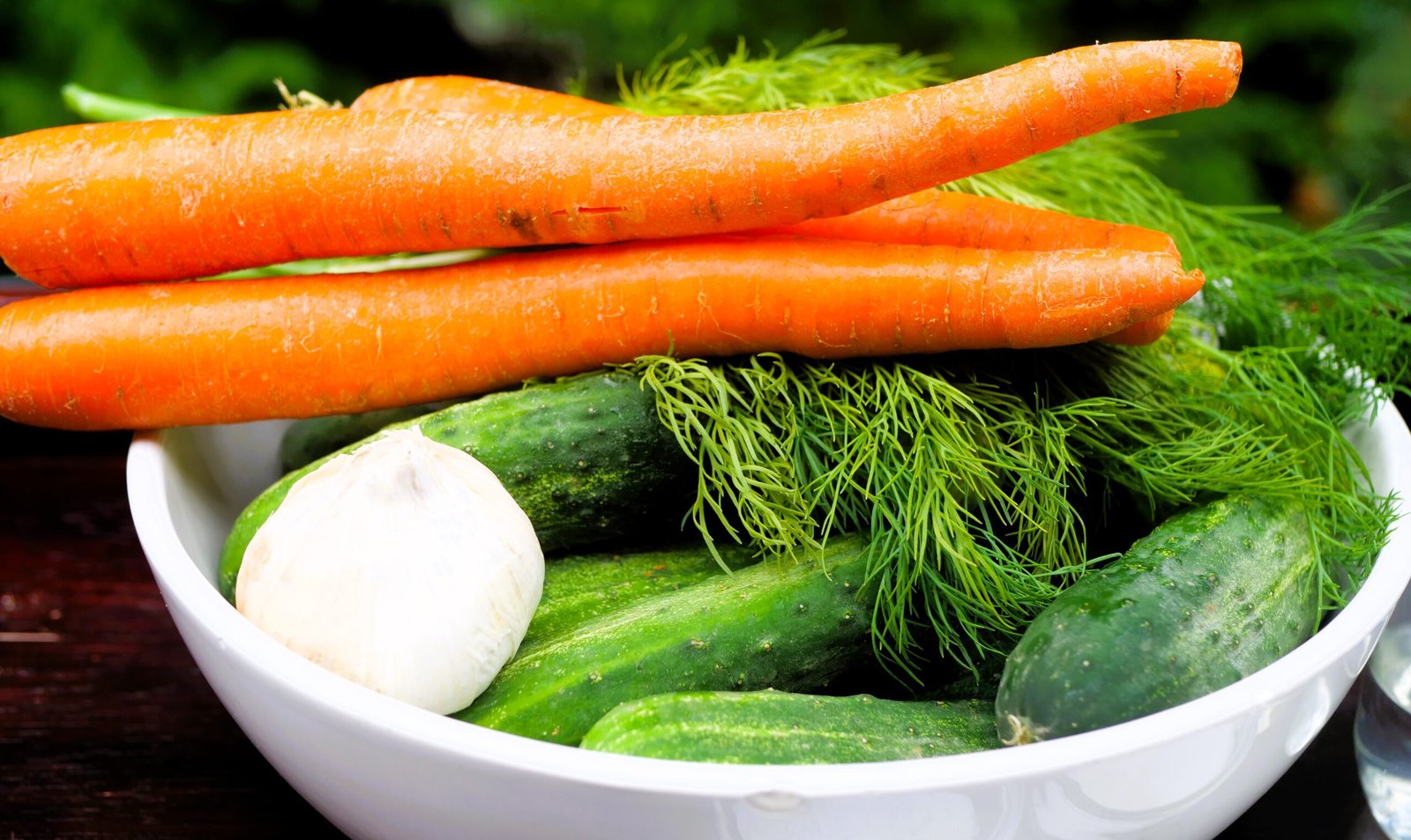
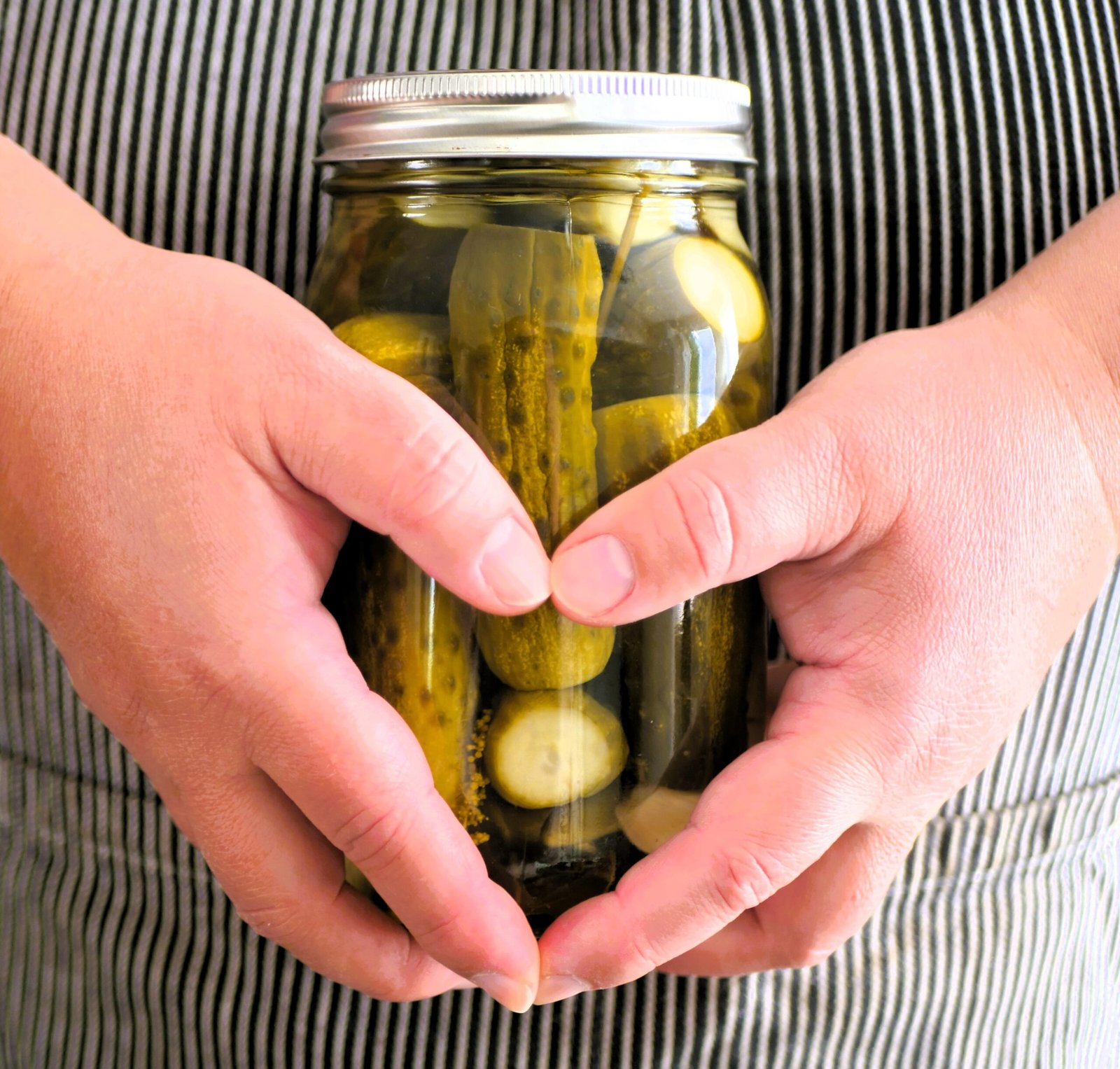

I hope it’s okay to include a link, but I wanted to ask about the safety of using calcium chloride in home canning, especially considering its potential side effects. I came across some information about Calcium Chloride Darnitsa, which discusses its uses and interactions. Could you clarify how the safety of food-grade calcium chloride compares to the medical uses mentioned here? You can find more details at https://pillintrip.com/medicine/calcium-chloride-darnitsa. Thank you!
Hi Frankie, It is a valid link to one of the Ukrainian pharmacy websites so no problem mentioning it 🙂 If you read it, you will notice they mention IV (intravenous) use of Calcium Chloride (for allergies etc). Regarding the oral route, their info aligns with ours (probably because a doctor writing it graduated from the same medical school I did). “Calcium chloride in granular, pellet, or flake forms for oral human consumption has limited use and is more commonly employed in other industries (e.g., food industry, veterinary medicine, as a desiccant). Using these forms orally without strict indications and physician oversight is potentially dangerous due to their high concentration and possible irritating effects on the gastrointestinal mucous membranes, as well as the risk of overdose.
Typically, other calcium compounds (e.g., calcium carbonate, calcium citrate) are used for oral administration as they are better tolerated and have more predictable bioavailability.” Cheers!